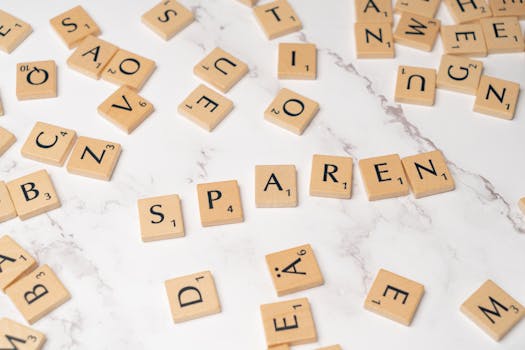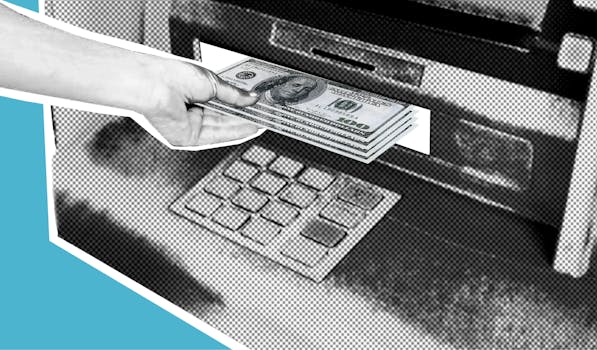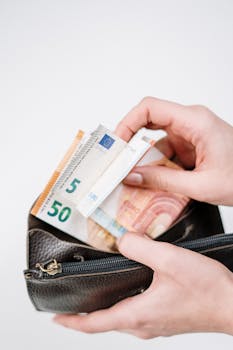Saving Strategies
Building an Emergency Fund: Why It Matters and How to Start
Discover easy, practical ways to start your emergency fund, decide how much to save, and protect your financial future—step-by-step instructions and real-world inspiration for all income levels.
Advertisement
Sometimes, unexpected expenses feel like speed bumps that throw you off course. Medical bills, car repairs, or sudden layoffs don’t send advance notice, but they can derail even a solid budget plan. Having an emergency fund ready isn’t about being pessimistic; it’s a practical move anyone can benefit from.
Planning for surprises helps protect your financial health. When you build a cash cushion, you gain peace of mind and control, even when plans go sideways. Each step in the process—saving a few dollars at a time or changing spending habits—builds real resilience.
This article breaks down emergency fund strategies for real people. You’ll discover clear rules, bite-sized steps, and personal examples that make protecting your future possible, no matter your income or starting point. Let’s make it achievable, not overwhelming.
Deciding How Much to Save for Real-World Stability
Pinpointing your emergency fund goal brings clarity and direction. Start by adding up essential monthly expenses: rent, groceries, loan payments, utilities, and regular insurance. Knowing this baseline helps tailor your fund to fit your exact needs.
While saving three to six months of expenses is a common guideline, the right number depends on your job security, family situation, and risk tolerance. Personalizing your fund size gives you confidence your safety net suits your life.
Calculate Baseline Needs Step-by-Step
List out what you actually pay each month. Write down every non-negotiable bill: rent, food, utility costs, medical premiums, loan minimums. Most find their “bare minimum” is less than their actual budget.
Next, total the bare minimum expenses. This minimally viable number becomes your monthly target if you suddenly lost your main income. Many people are surprised it’s lower than expected.
Multiply your total by at least three and up to six. This range covers a wide set of situations—job loss, accidents, or family health changes. You won’t have to guess.
Customization: Family, Work and Risk Tolerance
If you have dependents, pets, or irregular freelance income, add a small buffer. Example: “I take on an extra $500 cushion because my daughter’s asthma sometimes needs extra medicine.” It’s specific, not vague.
For a stable, salaried job, stick closer to three months of needed expenses. Contractors, gig workers, or single-income homes should aim for the six-month mark—emergency fund gives them breathing room between contracts.
Use analogies: Your fund is like spare gas for a road trip. If you drive on rough roads (uncertain job), pack more. The point is matching your fund size to your reality, not a one-size-fits-all figure.
| Household Type | Stable Income? | Recommended Months | What to Do Next |
|---|---|---|---|
| Single, stable salary | Yes | 3 months | List essential costs, save 10% per month |
| Couple, mixed income | Partly | 4-5 months | Add both incomes, adjust for shared bills |
| Family, kids | No | 6 months | Plan for extra health and childcare |
| Freelancer | Rarely | 6+ months | Track variable income, raise target |
| Retired | Partial | 4 months | Factor fixed and variable costs |
Transforming Spare Change Into a Safe Cushion
Break savings into small, automatic moves and you’ll create reliable habits before you know it. Each step you automate gives immediate traction and shrinks the risk of giving up.
You don’t need a windfall to build an emergency fund. Redirecting tiny, overlooked amounts quickly adds momentum, even if you live paycheck to paycheck. Consistency, not perfection, is the key here.
Micro-Savings in Action
Set an automated transfer—even $10 or $25 per payday—directly into your emergency fund account. Many people say, “I didn’t notice the missing money, but loved watching my balance grow each month.”
When you get a raise or bonus, redirect a fixed portion. For instance, “My new raise is $40 per week after taxes, so I transfer $25 into my emergency account automatically.” This removes the temptation to spend the extra money.
- Set up auto-transfer and forget it; this takes willpower out of the equation and keeps progress steady.
- Round up debit purchases to the next dollar and save the difference; this painlessly turns cents into dollars every week.
- Use cash-back rewards; deposit rebates from credit card statements directly into your fund instead of spending them on meals or gadgets.
- Switch to generic groceries or skip one small luxury; transfer the $5–$20 saved each week for tangible, quick progress.
- Sell unused items; deposit all profit from yard sales or online listings straight into your emergency fund rather than back into your wallet.
Stacking multiple micro-actions builds traction. Within six months, these habits can result in several hundred dollars set aside—money you’d barely miss in your daily life.
Tracking Your Emergency Fund Progress
Check your balance and savings tracker once per month. Color in a progress bar or celebrate each $100 milestone to create positive feedback. Each check-in is evidence of your commitment.
Use a notebook or calendar to record every transfer. Some say, “When I see the chart fill up, I want to save more. It’s motivating to see visual proof—I own my emergency fund.”
- Record your monthly balance in a phone note and look back every quarter for a quick confidence boost.
- Share milestones with someone you trust. Friends and family cheer you on and make saving feel like a team effort, rather than a solo chore.
- Set micro-goals: “I’ll hit $1,000 by December,” then reward yourself with a scaled-back treat like a movie night at home.
- Adjust savings up or down based on overtime or tight weeks, but never stop entirely. Flexibility keeps you engaged and avoids guilt over slow months.
- Remember, progress beats perfection. Even occasional small deposits ensure your fund keeps growing, so you avoid restarting from zero.
Regular monitoring makes savings stick. As your fund grows to $500 and beyond, you’ll feel real pride that motivates you to keep going, rain or shine.
Separating Your Emergency Fund to Avoid Temptation
Your savings grow when you can’t easily dip into them for impulse buys. Physically separating your emergency fund from daily spending makes it harder to access unwantedly.
Using a dedicated savings account with no checking or debit card attached is the simplest guardrail. Treat your emergency fund as off-limits except for honest emergencies.
Keep Your Safety Net Out of Sight
Open a savings account at a different bank or online bank—one you don’t log into every day. Reducing “friction” prevents those “I’ll just borrow a little” moments that drain your progress.
Don’t link your main debit card or checking account. Many people physically hide their emergency account number in a drawer, only for real emergencies, not everyday shopping.
Think of your emergency fund like home insurance paperwork: available when you need it, invisible the rest of the time. This small setup step makes a big difference in protecting your effort.
Enlist Accountability to Stay On Track
Tell a friend, partner, or family member your savings plan and share periodic updates. Their encouragement helps you resist small splurge urges, especially on tough days.
Joint accounts aren’t necessary—just a quick text or chat about hitting $500 or pausing transfers. Peer support increases your chances of success, as proven in health and finance research.
Use group challenges or savings apps that let you compare progress with others. Friendly competition transforms the process into a shared game; isolation rises risk of backsliding.
Defining Emergency Fund Rules for Fast Decisions
Clear rules for what is and isn’t an emergency reduce stress when bills hit hard. Decide these boundaries early, so you don’t hesitate or rationalize unnecessary withdrawals in the heat of the moment.
Good rules protect your future self. Stick to scenarios that genuinely threaten necessities: job loss, hospital bills, critical repairs. Luxury upgrades, deals, or fun travel stay outside the emergency fund’s purpose.
Sample Rule Checklist for Withdrawals
Write out, “I will only use my emergency fund for” and list true emergencies—like emergency surgery, losing your job, or urgent home repairs. Post this near your savings tracker or as a phone reminder.
Rehearse saying, “This feels urgent, but does it threaten my safety or shelter? If no, I wait and use my regular budget instead.” Practicing helps you decide quickly when stress is high.
Family or partners can discuss these rules together. Being united prevents arguments, guilt, or money stress during stressful events. This shared clarity is a real relationship strengthener.
Fast Response Scripts for Emergencies
When something big happens, say out loud, “Was this in my rules list? If yes, I’ll transfer emergency funds now. If no, time to revisit my budget.” This script creates pause and clarity.
Write a sticky note: “Emergency means urgent need only—no online deals, no gadgets.” Read this before logging into your bank. Physical reminders cut down on temptation, especially in the heat of the moment.
If you break your rule once, don’t quit. Recommit, adjust, and move on. Your emergency fund is progress, not perfection. Everyone hits speed bumps, but the new rule keeps you moving forward.
Building Recovery Steps If You Use the Fund
When your emergency fund is tapped for a real crisis, having a step-by-step refill plan prevents worry. Every withdrawal should prompt a brief reset—not panic or regret—but clear, confident action.
Take twenty minutes after the emergency to reassess your monthly expenses and restart transfers. Quick, decisive moves help you rebuild your safety net without spiraling into old habits.
Restarting Savings After a Setback
After using your fund, list changes needed: “Pause subscription X for 3 months”, “Transfer side gig money every Friday.” Concrete changes renew your progress day one after a financial setback.
Notify your accountability partner or use a progress journal. Share exactly how much you withdrew and set a fresh target. Knowing the path ahead reduces stress and keeps forward momentum.
Update your emergency fund tracker. For every $50 rebuilt, give yourself a small, free reward (walk, playlist, shoutout online). Make rebuilding feel as rewarding as spending once felt.
Guardrails to Prevent Repeated Draining
If you had to draw down your emergency fund twice in a year, look for patterns. Maybe car maintenance keeps surprising you—time to budget more sinking funds for future events.
Set a simple rule: “Only refill after covering this month’s bills and food.” Immediate restarts mean your next emergency fund contribution is always scheduled, never left for “when I feel ready.”
If emergencies keep recurring, pivot to problem solving, not blame. Adjust savings targets, negotiate bills, or seek income boosts—action, not guilt, creates recovery.
Practicing Consistent Savings Through Changing Life Seasons
Stability relies on adapting your emergency fund plan to big life changes: new jobs, kids, moving, even divorce. Flexibility keeps your buffer strong no matter the circumstances.
Check your fund goal annually and update it after any big shift—just like changing your smoke detector battery. Keeping your emergency fund realistic to your current life stage preserves its protection.
Annual Fund Check-In Process
Pick one month per year—often around tax refund time—to review your expenses and recalculate your ideal fund size. Update your account if new costs arise, like higher rent or new insurance.
Compare your actual savings to your new minimum target. If you find a gap, set up new auto-transfers, even if it’s $5 more per week, so you never fall behind without warning.
Review the rules list: add any new family needs or health priorities. Share revisions with your accountability partner for support. An emergency fund adapts to your evolving life, not a fixed formula.
Life Event Adjustments for Stay-Ready Funds
If you welcome a new child, factor in diapers, medical checks, and child care. Increase your target fund as soon as possible, so every family member remains covered, not just adults.
During a move, pause extra savings and use the minimum auto-transfer until you settle. Once expenses calm, recalculate and resume building until your emergency fund feels strong again.
If facing a job change, quickly add one extra month of savings to your fund, skipping luxuries or lowering bill payments if needed. Immediate action maintains the buffer until new paychecks flow.
Reaping the Daily Benefits of a Funded Emergency Account
Every dollar in your emergency fund isn’t just future security; it brings mental relief, better decision-making, and less daily stress. Knowing you’re ready for the unexpected improves your overall well-being today.
Financial confidence grows each time you watch your balance rise, see bills paid calmly, or handle a crisis without panic. Small wins—like re-routing a surprise expense to savings—prove your efforts work.
Your mindset shifts from fear to capability. People say, “I stopped worrying about the ‘what ifs’ and slept better knowing my emergency fund would cover me if needed.” This peace is as valuable as the money itself.
When an emergency happens—a car breakdown, a sudden dental bill, or disrupted work—you act quickly and confidently. No more scrambling, no extra debt. The fund does its job, protecting what you’ve built.
Confidence grows as small habits compound. Even if you start from zero, each action brings you closer to a secure, flexible, and resilient financial future.
Frequently Asked Questions
How much should my emergency fund be?
Aim for three to six months of essential living expenses. Base this on bare necessities—like housing, groceries, insurance, and loans. Adjust up if your income is unpredictable or you have dependents.
Where should I keep my emergency fund?
Store it in a separate, easily accessible savings account that isn’t linked to your daily spending. Online or high-yield savings accounts work well, keeping funds safe but slightly out of immediate reach.
Can I use my emergency fund for planned expenses?
No, avoid using it for expenses you expect—like annual bills, vacations, or predictable repairs. Only tap your fund for true emergencies that threaten your basic needs or safety.
What counts as a real emergency?
Qualifying emergencies threaten your essential needs: job loss, major car repairs, unexpected medical bills, or urgent home fixes. Luxury wants or routine expenses don’t qualify. Make a simple rules list and stick to it.
How do I rebuild my emergency fund if I use it?
Resume automatic transfers immediately, even if you can only save small amounts at first. Adjust non-essential spending to refill the fund. Track your progress and set milestone rewards to stay motivated through the process.





